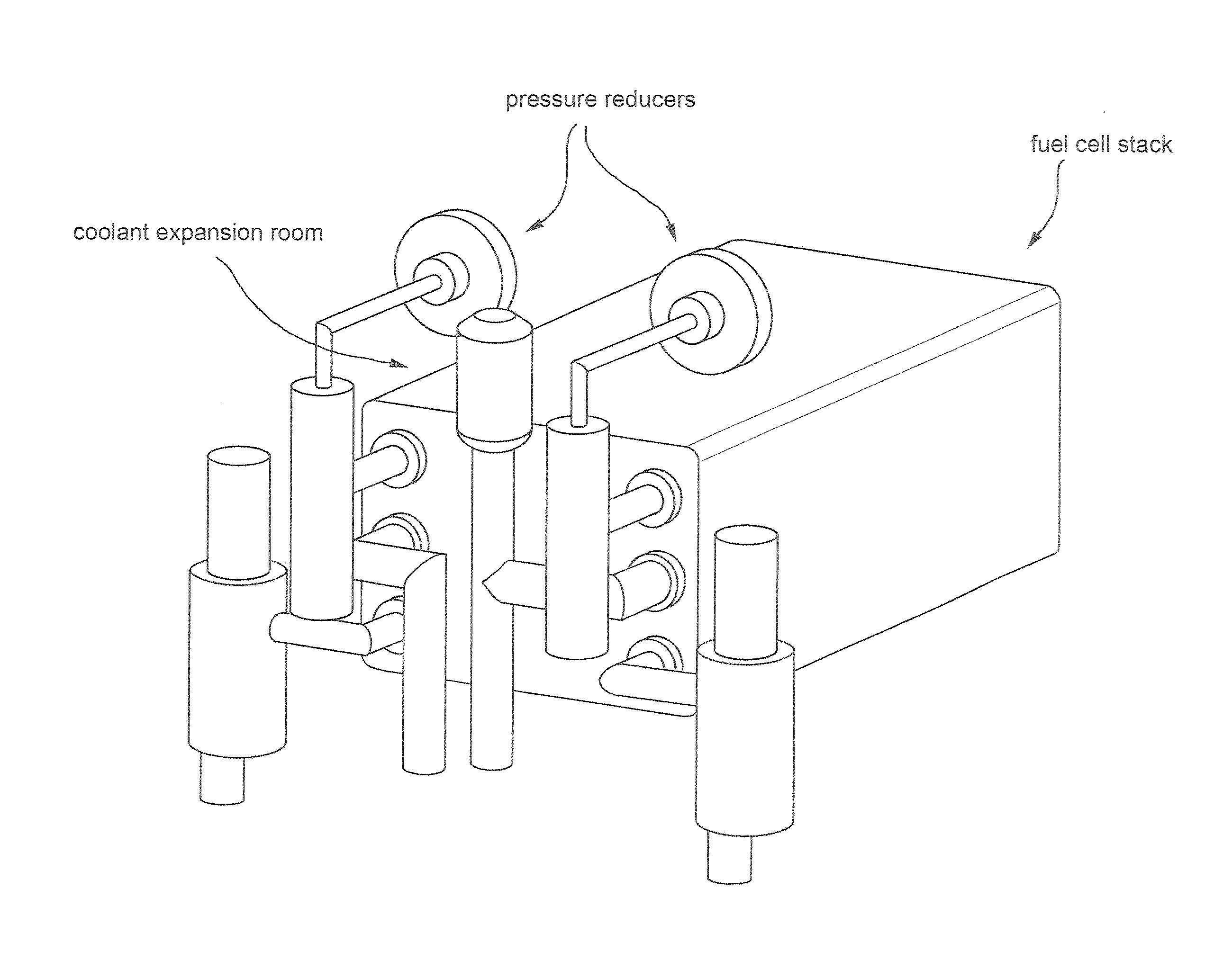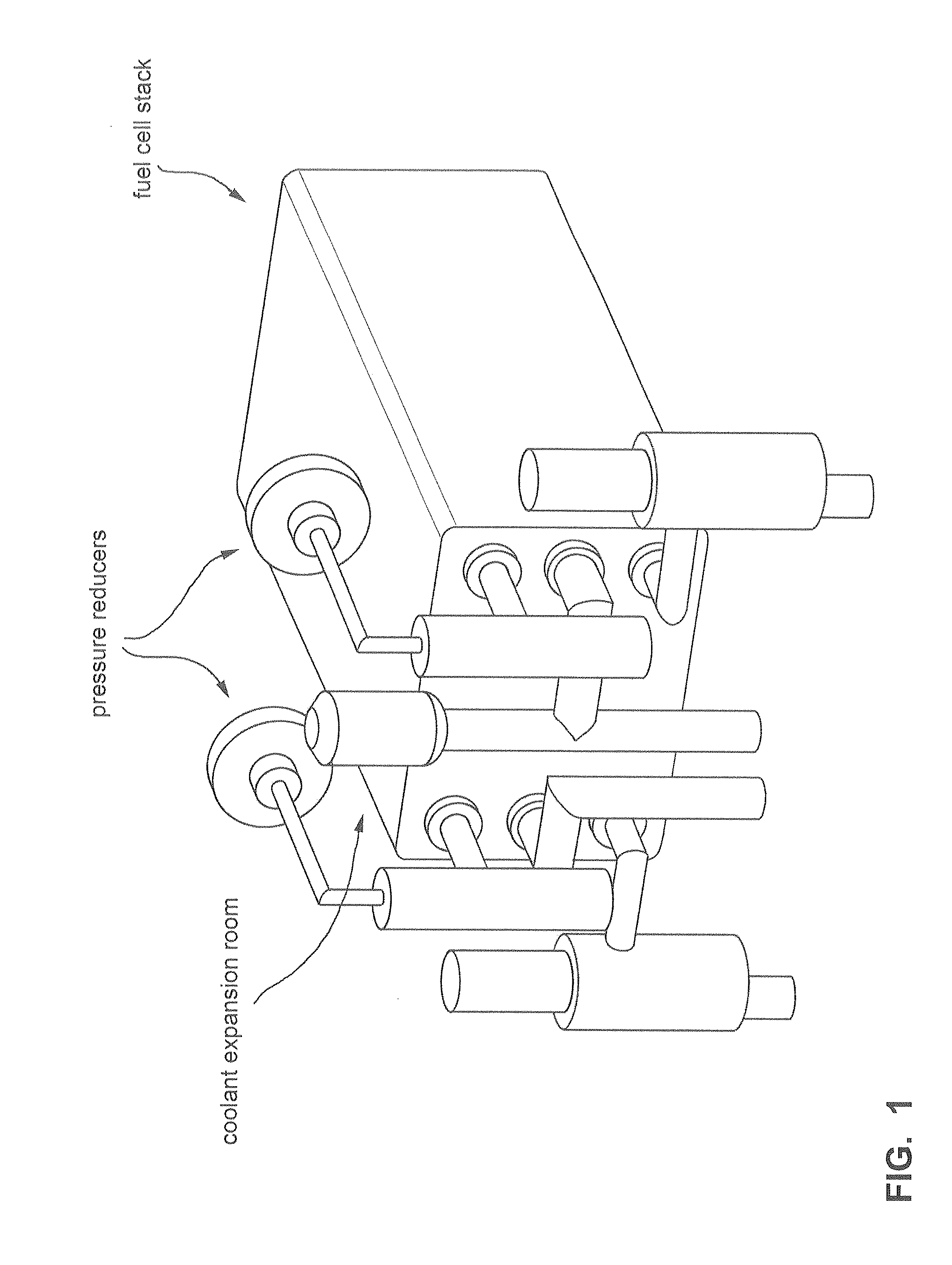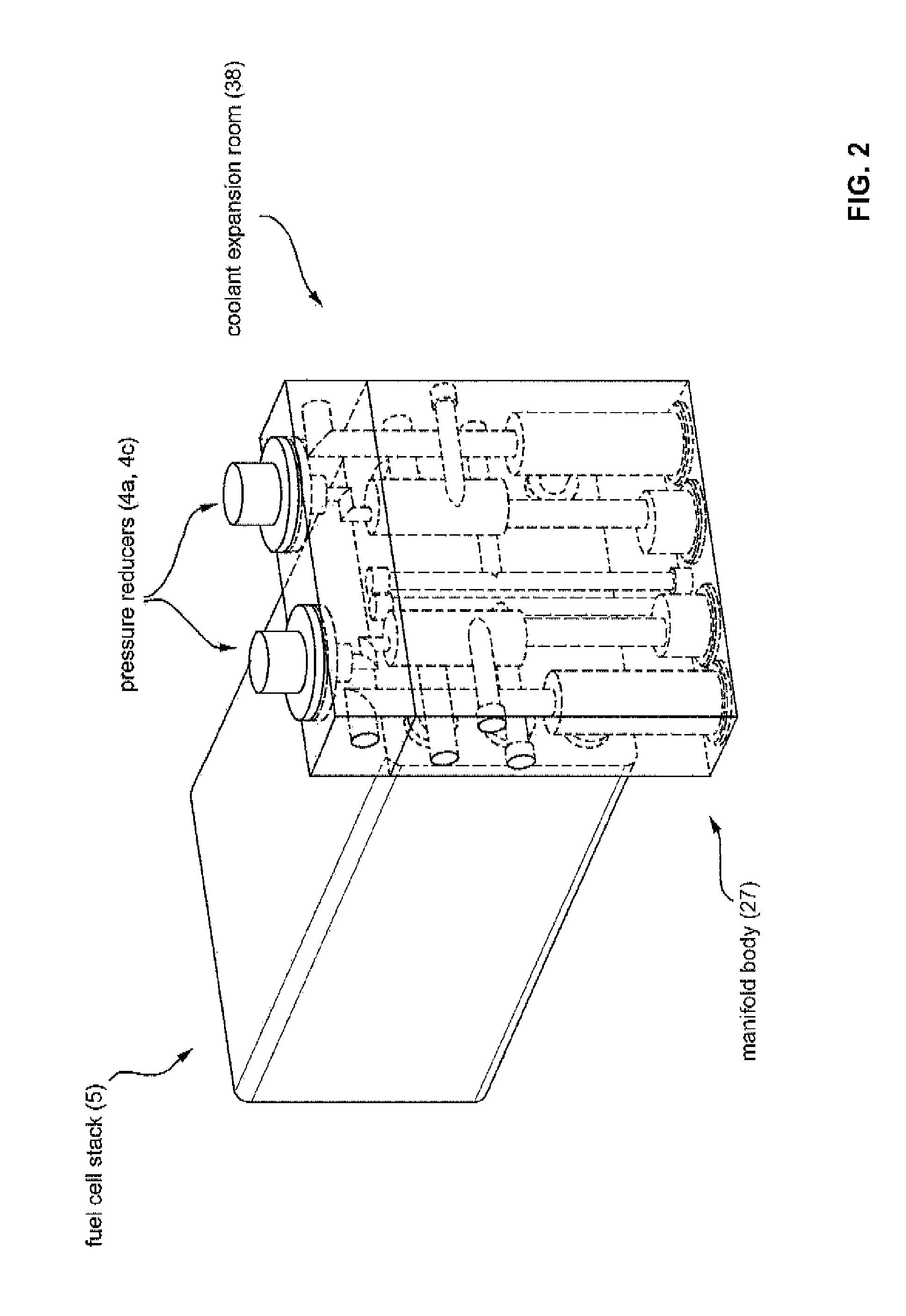Back-up fuel cell electric generator comprising a compact manifold body, and methods of managing the operation thereof
- Summary
- Abstract
- Description
- Claims
- Application Information
AI Technical Summary
Benefits of technology
Problems solved by technology
Method used
Image
Examples
Embodiment Construction
[0059]With reference to FIG. 3, there is indicated as a whole with 1 a back-up electric generator devised to supply electric energy to a user 8. The generator 1 comprises an electric conversion module 50 comprising, in turn, a plurality of PEM fuel cells piled in a stack 5, a manifold body 27 and a cell voltage monitoring (CVM) device 39 (see detail in FIG. 4). The generator is further provided with a power conditioning unit 22, which manages the supply of electric power to user 8 by alternatively acting upon switches so that user 8 receives power either from the generator 1 or from other emergency power sources (such as batteries, capacitors, etc.). Further details concerning operation modes managed by the power conditioning unit 22 will be described below.
[0060]A flow of hydrogen in stoichometric excess is supplied to generator 1 from supply means 2, such as a cylinder of technically pure hydrogen. The supply of hydrogen is enabled by valve means 3, including valves that may be ma...
PUM
 Login to View More
Login to View More Abstract
Description
Claims
Application Information
 Login to View More
Login to View More - R&D
- Intellectual Property
- Life Sciences
- Materials
- Tech Scout
- Unparalleled Data Quality
- Higher Quality Content
- 60% Fewer Hallucinations
Browse by: Latest US Patents, China's latest patents, Technical Efficacy Thesaurus, Application Domain, Technology Topic, Popular Technical Reports.
© 2025 PatSnap. All rights reserved.Legal|Privacy policy|Modern Slavery Act Transparency Statement|Sitemap|About US| Contact US: help@patsnap.com



